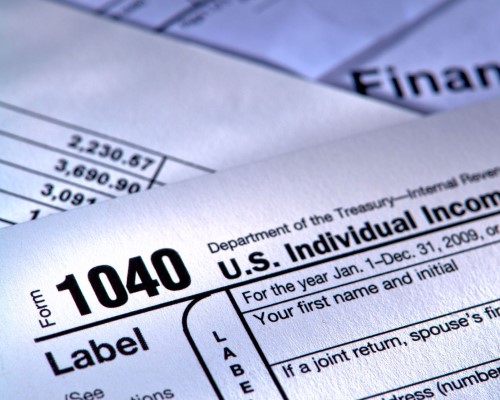Business Owners’ tax season is year-round. You can save time and resources by meeting with your tax professional regularly to consider any tax laws that could affect your returns.

A Checklist for Getting Your Small Business Tax Compliant
Every year American taxpayers must confront what is arguably one of the most complex tax codes in the world. But nobody has it harder than small business owners, who must be able to navigate many additional layers of nuanced tax rules that make tax compliance challenging. Because of that, many small businesses overpay their taxes each year. Others underpay. In either case, the mistakes can be very costly.
Business owners must take extra measures to ensure they are in compliance with federal tax laws.
Your Tax Compliance Checklist
To get a jump on tax filing season, here’s a checklist you can follow to ensure you file an accurate return and take full advantage of what the tax code has to offer.
Meet with your bookkeeper now. You need to get your ducks in a row early in the year. That starts with meeting with your bookkeeper or accountant to review your accounting records and verify all your entries. Meeting early on gives you time to resolve any potential discrepancies. It will also give you more time to review your financials, including your General Ledger, Profit & Loss Statement, and Balance Sheet, before handing them over to your tax preparer.
Gather your bank statements. Your tax preparer will want to reconcile your bank statements to ensure that your income deposits match your reported income. To make their job easier and less time-consuming, gather your bank statements and compare them with your Profit & Loss Statement.
Separate business from personal expenses. You may have used personal funds to pay for business expenses during the year. You don’t want to miss out on any deductions, so review your personal bank account and credit card statements to identify business expenses.
Gather your receipts. Did you purchase any equipment during the year? Any asset costing more than $500 that’s expected to be in use for more than a year may be eligible for a deduction. Your tax preparer can determine how it is to be expensed.
Verify sales taxes paid. If your business is required to pay sales taxes, you must collect the documentation showing those calculations and payments and provide it to your tax preparer.
Verify your loan balances. Review your business loan statements to verify the balances match the balances on your Balance Sheet.
Make sure your yearly mileage log is current and correct. If you use your vehicle for business travel, make sure your mileage log is complete and accurate. You don’t want to miss out on the mileage deduction, but the IRS requires that you have a mileage log. Your log should include any other operating expenses for the vehicles used for business.
Add up any home office expenses. If you use a space in your home exclusively for business purposes, you can deduct a percentage of your mortgage or rent, utilities, repairs, insurance, and maintenance. You’ll need to provide your tax preparer with those expenses and the square footage of your home office space as a percentage of your home’s total square footage.
Double-check your meal expenses. You can still deduct 50% of the cost of meals you buy for clients and 100% of the meals you buy on the road (for you or your employees). But you need accurate records of the meals with receipts to back them up.
Issue your 1099s. If you paid out more than $600 to any non-employee, you must send them a 1099-MISC form before January 31. Your bookkeeper can tell you who needs to receive one. These are deductible expenses that should be recorded on your Profit & Loss Statement.
Set aside enough money for tax payments. If you anticipate owing taxes, set aside enough money to pay both your annual taxes as well as your quarterly estimated taxes.
Prepare for Next Tax Season Now
Preparing for tax season can be time-consuming and frustrating, especially if you wait until it’s time to file your taxes. If you develop the mindset that business owners' tax season is year-round, you can save time and resources while minimizing your frustration.
Meet with your CPA or tax professional now to consider any changes in tax law that could affect your returns. It’s also the ideal time to consider strategies for minimizing your tax liability for the current year.
Recent articles:

Managing Debt Effectively for Small Business Owners: A 2026 Guide - Debt doesn’t have to hold your business back. With clear insight, smart repayment, and proactive planning, you can turn borrowing into a growth tool—not a burden.

Building Strategic Partnerships for Small Business Success - Strategic partnerships amplify reach, reduce risk, and accelerate growth—proving small businesses go further, faster when they build together.

Embracing Micro-Influencer Marketing for Small Businesses - Micro-influencers give small businesses authentic reach, higher engagement, and real sales—proving that trust, not size, drives modern marketing.

Using Financial Software to Streamline Small Business Bookkeeping - Automating your bookkeeping saves time, reduces errors, and gives you real-time insights—so you can focus on growth, not data entry.

Using Data Analytics to Drive Small Business Decisions - Data analytics empowers small businesses to make smarter decisions, cut costs, improve marketing, and stay competitive in today’s fast-paced market.

The Rise of Hybrid Work Models for Small Businesses - Hybrid work helps small businesses attract talent, save costs, and stay competitive, making flexibility a key driver of growth in 2025 and beyond.
Previous Articles:
- Adapting to Changing Consumer Behaviors in 2025: Essential Steps for Small Businesses
- Crafting a Realistic Cash Flow Forecast for 2025: A Guide for Small Businesses
- Elevate Your Business with Flexible Payment Options for Customers
- Understanding and Optimizing Your Business Credit Score
- The ROI of Automation: Affordable Tech Solutions for Small Business Growth
- High-Impact, Low-Cost Marketing Ideas for Small Businesses
- The Small Business Owner’s Guide to Managing Stress and Avoiding Burnout
- With Credit Tightening, How Small Businesses Can Build a Strong Financial Profile
- Post-COVID Trends That Small Businesses Can’t Afford to Ignore
- Standing Out in a Saturated Market: Tips for Small Business Differentiation
- Tightening the Belt: 10 Cost-Cutting Strategies for Small Businesses Facing Rising Expenses
- Five Steps Small Businesses Can Take to Increase Web Traffic
- Retention 101: Keeping Your Best Employees in a Competitive Market
- Creative Ways to Overcome Labor Shortages in Your Industry
- Preparing Your Business for the Next Recession: Actionable Tips
- 2025 Tax Updates for Small Businesses: What You Need to Know
- Email Marketing Mistakes Businesses Must Avoid
- Why Community Engagement is Crucial for Small Businesses
- Adapting to E-commerce: A Guide for Brick-and-Mortar Stores
- Harnessing the Power of Customer Reviews to Boost Your Business
- Small Business Owners Need an Integrated Approach to Post-Pandemic Financial Planning
- How to Build a Strong Brand Identity on a Budget
- The Future of Remote Work: Tips for Small Businesses to Thrive
- Navigating the Gig Economy: Opportunities and Challenges for Small Businesses
- Sustainable Business Practices: How Small Businesses Can Make a Big Impact
- 10 Essential Free Tools for Small Businesses
- 7 Ways Small Businesses Can Benefit from AI and Automation
- How to Leverage Social Media for Your Small Business in 2024
- The AI Advantage: How Small Businesses Can Thrive in the Age of Intelligence
- Shielding Your Business: Essential Insurance for Risk Management
- How Outsourcing Can Help Your Small Business Grow
- Securing Your Data: A Cloud Security Checklist for Small Businesses
- Mastering Cash Flow: How Banks Empower Small Businesses with Cash Management Tools
- Optimizing Productivity for a Remote Workforce
- Digital Strategies: The Engine of a Virtual Distribution Strategy
- Attracting and Engaging Gen Z: The Future of Your Workforce
- Managing Cash Flow for Business Prosperity
- How to Position Your Bank as a Trusted Advisor for Small Businesses—And Why It Matters
- Business Owners Need a Complete Risk Management Plan
- Preparing Your Business to Borrow
- Is Your Business Prepared for Generation Z?
- Small Business Trends You Don’t Want to Miss in 2024
- Ideas on How to Improve the Customer Experience
- Do You Use Website Analytics to Learn About Your Customers’ Interests?
- 5 Strategies to Incorporate into Your Business for 2024
- The Benefits of Mobile Banking and Remote Deposit Capture
- Should You Have a Blog on Your Website?
- Best Practices for Protecting My Business Online
- Using ACH to Improve Cash Flow
- 10 Ideas to Help You Recruit New Talent
- How AI Could Improve Your Business
- Using a Small Business Loan to Expand Your Services
- Local, State, and Federal Resources for Your Business
- Security Essentials for Keeping Business Data Safe
- Leveraging Your Bank’s Cash Management Services to Improve Your Business
- When is the Best Time to Obtain a Business Loan?
- How Much Insurance Do I Need for My Business?
- Incorporating the Latest Merchant Services Technology for Your Business
- A Checklist for Getting Your Small Business Tax Compliant
- How Third-Party Data Can Help Target Marketing
- Is Your Small Business Taking on too Much Debt? Steps to Take to Pay it Down More Quickly
- Leveraging Digital, Direct Mail, and Social Media to Drive Business Customer Acquisition
- Businesses Should Plan Ahead for Year-End Tax Strategies
- Cash Flow Management Tips for Small Businesses
- Recruiting Top-Tier Talent in a Tight Job Market
- Sales or Marketing – Banks Need Both to Grow Revenues
- The Biggest Security Threat to Your Business
- How to Prevent Employee Fraud in Your Business
- There's Still Time to Claim the Employee Retention Credit. What is it, and How to Qualify
- Preparing Your Business to Borrow
- Insurance Essentials for Managing the Many Small Business Risks
- Employers are finding that remote work can be an effective way to increase productivity and lower cost
- Don't Let Your Business be the Next Ransomware Victim
- Taking Advantage of Bank Cash Management Technology
- How to Take Your Digital Marketing to the Next Level
- How Annual Assessments Can Prevent Fraud in Your Business
- How to Position Your Bank as a Trusted Advisor for Small Businesses - And Why it Matters
- Getting to Yes with a Solid Loan Proposal
